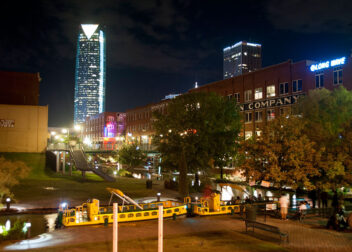Eco Holiday in Spain
When I got back from my last holiday in Spain, friends were a little surprised when I told them where I’d been. Many of them had last gone to Spain as kids, enjoying family holidays on the beaches of the Costa Blanca, playing in arcades, and walking the concrete promenades eating fish and chips. Some had gone so far as to buy Spanish property in the area. Others had enjoyed stag dos in Barcelona and tramped the city streets from bar to bar. Knowing how much I love nature and living a green life, Spain didn’t seem like my sort of destination. Once I described the mountains, lakes, and meadows that surrounded the eco-lodge where I had stayed in the Pyrenees, they realized that the Spain I visited was a million miles away from the high-rise hotels of the Costa del Sol or the crowded cities.
Eco-living

Like most of us these days, my life is filled with deadlines, schedules, and endless digital communication that keeps me connected at all hours of the day. When I started to plan a holiday, I realized that I wanted a complete break from my everyday life and needed to spend time in an unspoiled and peaceful natural environment. When I saw photos of a beautiful mountain holiday home in the Pyrenees, I knew I would find tranquillity there. The cottage nestled in a hillside setting at the end of a 200-meter track and was covered in greenery that made it blend in with the landscape. The roof of the cottage was covered in green plants and flowering, purple irises that grew from insulating straw bales that kept it cool in summer and warm in cold weather. The house was solar-powered and household water needed to be pumped daily from a spring on the hillside above, while drinking water came from the fountain in the village and had to be kept in containers. The interior of the two-story lodge was beautifully crafted from natural, local wood and stone and the living spaces were light and airy, with large windows that looked out over a pristine, uninhabited valley.
Also Read: 10 Ways to Travel Cheaper in Spain
The location

My holiday home was located in the Pallars Sobira region of Lleida, a part of Catalonia that lies in the northwest of Spain. This area of the Pyrenees is a protected area and has several natural parks and nature reserves. Every day, we would explore the countless hiking trails that surrounded our cottage, taking us through thick forests, hillside meadows, and steep hills and past rivers, lakes and waterfalls. The area is beautiful and unspoiled but has been inhabited for many centuries and the walking trails link many small, picturesque villages and towns as well as castles, churches, monasteries, and even prehistoric monuments. What you won’t find are built-up urban areas or sprawling holiday resorts; this part of Spain is the place to come for a really authentic experience.
Also Read: 10 Things to do in Barcelona, Spain
Getting There
As I was going on an eco-break, I decided to avoid air travel and make my way to Catalonia using public transport instead. If I had chosen to fly, the most obvious route from the UK would have been a flight to Barcelona Airport (BCN), which lies 2 hours and 20 minutes away to the south. Reus Airport (REU) was the closest airport, about 1 hour and 15 minutes away, but there are no direct flights there from the UK. Several airlines fly directly from the UK to Barcelona, including British Airways, Ryanair, and Monarch.
In keeping with the eco theme of my holiday, I chose to travel by train. The train journey took over 10 hours but was very straightforward as there is a high-speed, virtually non-stop TGV rail service from Paris to Barcelona. I caught the morning Eurostar from London and once I reached the Gare du Nord in Paris took a quick Metro journey across town to the Gare de Lyon. My train sped down to the south of France and across to the Pyrenees on a relaxing journey that offered spectacular scenery as we traveled through the countryside. On arrival in Barcelona, I could have rented a hire car but chose to use a local taxi firm to take me directly to the holiday rental.
Hiring a car and driving all the way from the UK to the Pyrenees would have been another option, with a non-stop driving time of around 18 hours. As I dislike long, unbroken drives, I would have chosen to break the journey overnight along the way and add a hotel stay to the cost of petrol, toll road fees, and ferry or Eurotunnel fares, driving would have been the most expensive option. My train journey cost me under £100 as I booked the tickets well in advance to make a saving and low-cost flights to Barcelona can be found quite easily.



